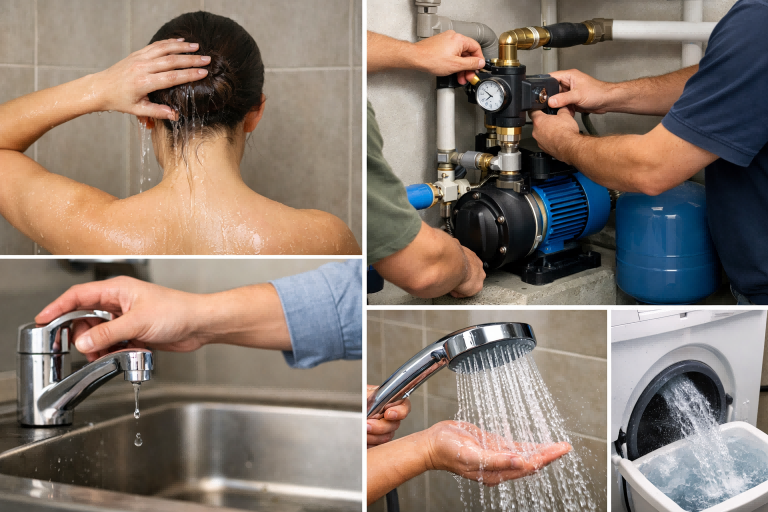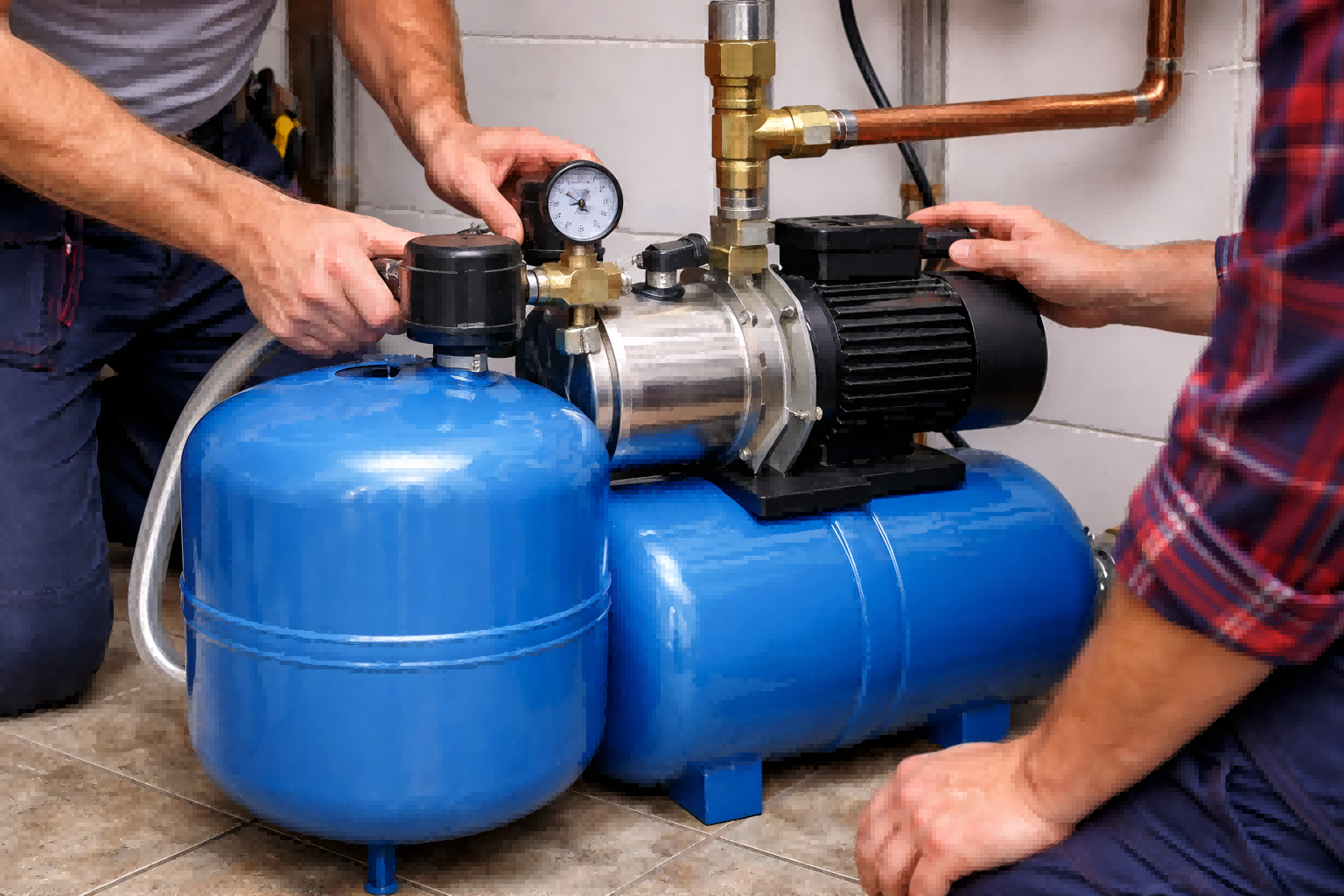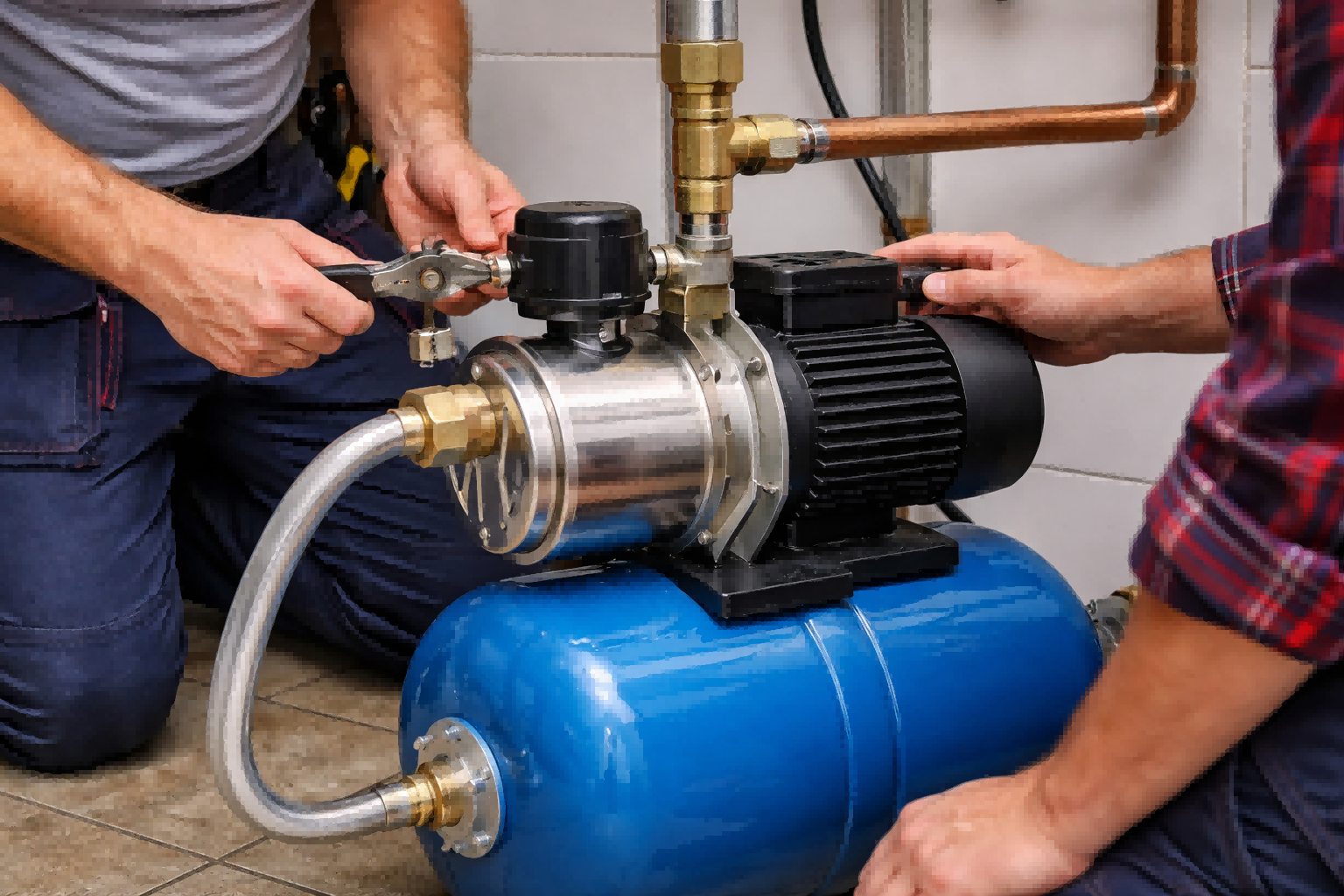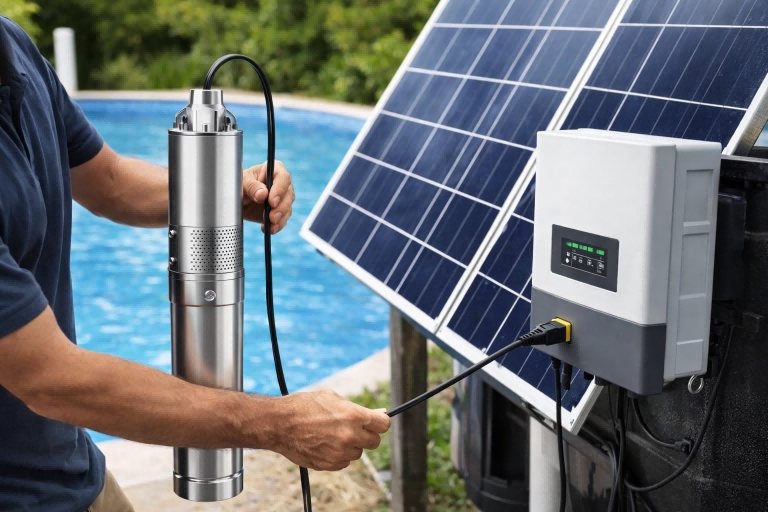Struggling with inconsistent water pressure in your building?
Worried that a single pump failure could lead to a complete water outage and costly downtime?
A duplex booster pump system is the an advanced solution.
A duplex booster pump system features two pumps operating in parallel to deliver consistent water pressure and flow.
This dual-pump configuration provides redundancy, ensuring that if one pump fails, the other can take over, guaranteeing an uninterrupted water supply and superior reliability compared to single-pump setups .
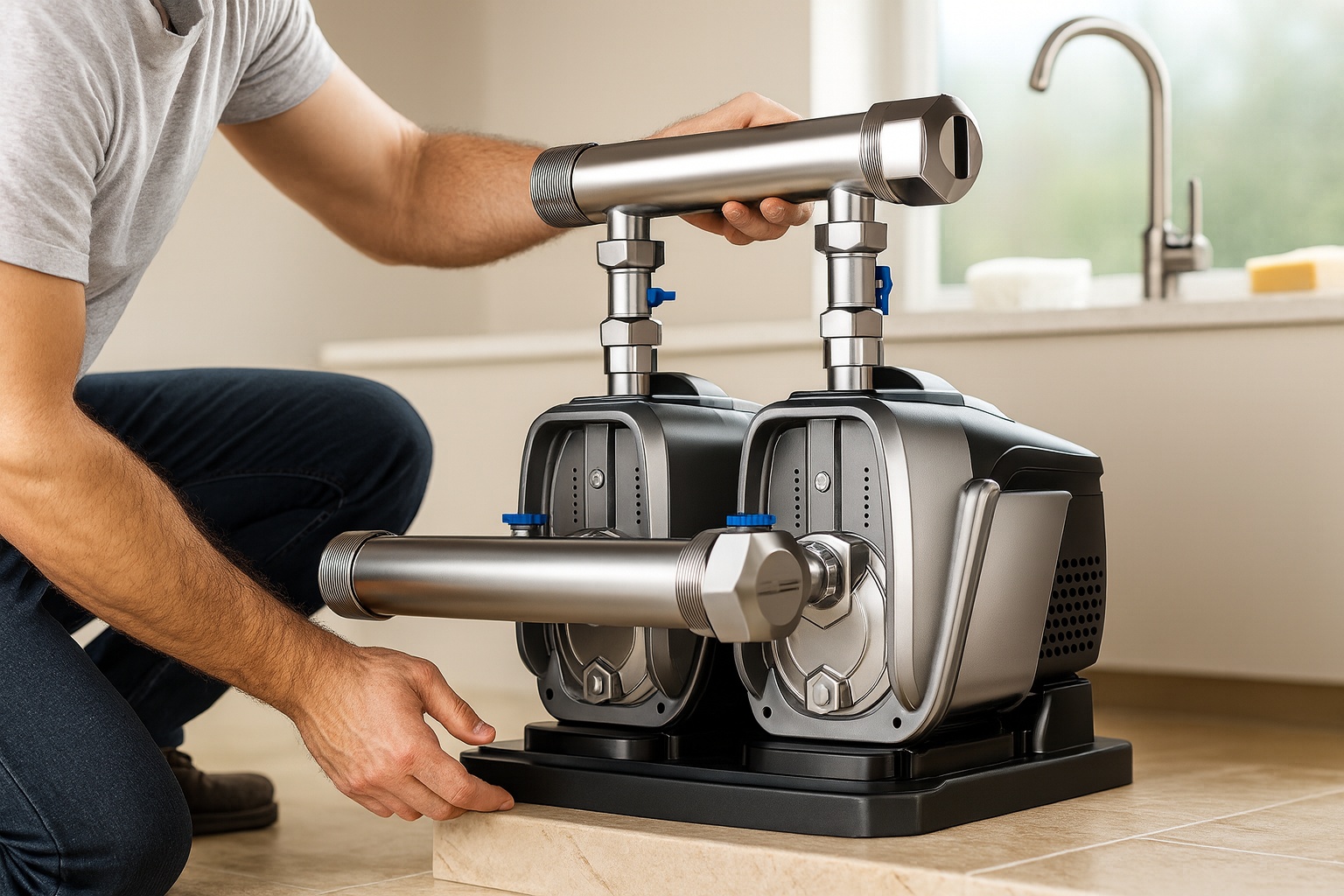
Understanding the core principles of a duplex system is the first step.
But to truly appreciate its value, we need to delve into the specific features and operational logic that make it the preferred choice for demanding residential, commercial, and industrial applications.
Let's explore the components and concepts that define this powerful technology.
Key features and benefits
Tired of systems that offer limited functionality and wear out quickly?
The features of a duplex booster system are not just about having a backup.
They are about delivering smarter, more efficient, and longer-lasting performance.
Key features include the core dual pump configuration, consistent pressure management via Variable Frequency Drives (VFDs), enhanced reliability from automatic backup, significant energy savings, and pump alternation for extended service life [^1].
These elements work together to create a system that is robust, intelligent, and cost-effective.
The combination of mechanical redundancy and intelligent control is what sets a duplex booster system apart.
This isn't merely two pumps placed next to each other; it's an integrated system where each component plays a critical role in achieving a seamless and reliable water supply.
From the durable hardware to the sophisticated software, every aspect is engineered for peak performance and peace of mind.
Let's break down these essential features to understand how they contribute to the system's overall superiority.
Dual Pump Configuration
The most fundamental feature is the presence of two pumps.
These pumps are typically identical and are plumbed to work in parallel.
This means they can either work one at a time or both together, depending on the system's needs.
This setup is the foundation for all the other benefits, including reliability and high-flow capacity.
Consistent Pressure with VFDs
Modern duplex systems almost always incorporate Variable Frequency Drives (VFDs).
A VFD is an intelligent controller that adjusts the pump motor's speed in real-time.
Instead of the pump running at full speed and then shutting off, the VFD modulates the speed to precisely match the water demand.
This technology is crucial for maintaining a constant, stable water pressure throughout the building, regardless of how many taps are open.
It eliminates the frustrating pressure fluctuations common with older systems [^1].
Advanced systems use high-efficiency Permanent Magnet Synchronous Motors (PMSM) alongside VFDs for even quieter and more precise control [^3].
| Feature | Standard System (On/Off) | VFD System (Variable Speed) |
|---|---|---|
| Pressure | Fluctuates between high/low setpoints | Remains constant and stable |
| Energy Use | High energy consumption at startup | Ramped, energy-efficient operation |
| Motor Stress | High mechanical stress from abrupt starts/stops | Low stress due to soft start/soft stop [^4] |
| Noise Level | Noticeably louder during operation | Ultra-quiet, often below 50dB [^5] |
Increased Reliability Through Redundancy
Redundancy is a core engineering principle for any critical system.
In a duplex setup, if one pump fails due to a mechanical issue or requires maintenance, the second pump is ready to take over automatically [^2].
This ensures a continuous, uninterrupted water supply.
This feature is invaluable in applications like hospitals, hotels, and industrial processes where water downtime is not an option.
The system provides peace of mind that a single point of failure will not cripple the entire water supply.
Energy Efficiency
Duplex systems are inherently more energy-efficient.
During periods of low water demand, only one pump needs to operate, and with a VFD, it will run at a reduced speed, consuming minimal energy [^2].
When demand peaks, the second pump kicks in to assist.
This approach of scaling the system's output to the exact demand prevents the wasteful energy consumption of a large, single pump that must run at full power even for small loads.
This intelligent staging can lead to significant reductions in electricity costs over the system's lifespan.
Automated Pump Alternation
To ensure both pumps wear down evenly, duplex control systems feature an alternation function.
The controller will automatically switch the roles of "lead" pump (the first to turn on) and "lag" pump (the second to assist) [^1].
This is often done on a timer, for example, every 24 hours of runtime.
This balanced workload prevents one pump from accumulating all the operational hours while the other sits idle.
The result is a longer service life for both pumps and more predictable maintenance schedules.
How it works
The operational logic of a duplex booster system seems complex, but it's based on a straightforward, responsive cycle.
It is an intelligent system designed to react instantly to changes in water demand.
How does it seamlessly manage pressure without human intervention?
The process begins when a pressure transducer detects a drop in system pressure [^1].
The designated "lead" pump starts to meet the demand.
If this single pump cannot restore pressure, the "lag" pump activates to provide additional flow.
Once the demand lessens and pressure stabilizes, the pumps shut down in sequence [^1].
This automated, multi-stage response ensures that the system uses only the energy required to meet the current demand.
It is a constant cycle of monitoring, reacting, and stabilizing that guarantees a smooth and efficient water supply.
The beauty of the system lies in its ability to adapt, scaling its power up and down effortlessly.
Let's walk through the sequence of events step-by-step.
Step 1: Demand is Detected
The brain of the system is a pressure transducer.
This sensitive device constantly monitors the water pressure in the pipes.
When you open a faucet or a valve, water starts to flow, and the pressure in the system begins to drop.
The transducer instantly registers this change and sends a signal to the pump controller.
Step 2: Lead Pump Starts
The controller receives the signal indicating low pressure.
It then activates the designated "lead" pump.
In systems with VFDs, the pump doesn't just switch on; it soft-starts, gradually ramping up its speed [^4].
The VFD will increase the motor speed just enough to try and meet the water demand and restore the pressure to the desired setpoint.
For many low-flow situations, this single pump is all that's needed.
Step 3: Lag Pump Assists
What happens during periods of high demand, like in the morning when many people are showering?
If the lead pump is running at full capacity but the water pressure continues to fall, it means the demand is too high for one pump to handle alone [^1].
The controller recognizes this and, after a brief, programmed delay, activates the "lag" pump.
The second pump starts up and operates in parallel with the first, effectively doubling the system's flow capacity.
Step 4: Pressure is Restored and Pumps Shut Down
With both pumps working together, they can quickly meet the high demand and bring the system pressure back up to the setpoint.
As water usage decreases and faucets are turned off, the demand for water drops.
The pressure transducer senses that the pressure is stable and being easily maintained.
The controller will then shut down the "lag" pump first.
The "lead" pump will continue to run, with its VFD slowing it down to match the reduced demand.
When all flow stops, the lead pump will perform a soft-stop, shutting down completely and waiting for the next pressure drop.
This staged shutdown is just as important as the startup for ensuring smooth operation and energy savings.
Redundancy and Reliability
What is the biggest risk of relying on a single piece of equipment for a critical resource like water?
A single point of failure can halt operations, cause major inconvenience, and lead to expensive emergency repairs.
This is the exact problem that duplex systems are designed to eliminate.
The most significant advantage of a duplex system is its built-in redundancy [^2].
With two pumps, the system can continue to operate even if one pump malfunctions or requires maintenance.
This backup capability ensures a continuous, uninterrupted water supply, making the system fundamentally more reliable than any simplex (single-pump) configuration [^2].
Reliability isn't just a feature; it's the core philosophy behind the duplex design.
For facilities where a water outage is unacceptable, this redundancy is non-negotiable.
It transforms the water supply from a potential vulnerability into a dependable utility.
Let's examine how this reliability plays out in real-world scenarios and how modern technology enhances it even further.
The Power of a Backup
Imagine a large residential building.
If its single water booster pump fails, no water can reach the upper floors.
This means no showers, no flushing toilets, and angry residents.
With a duplex system, the scenario is completely different.
Should the primary pump fail, the control system automatically calls on the backup pump to take its place.
Residents would likely never even notice a problem occurred.
This seamless failover capability is the essence of true operational reliability [^2].
Simplified Maintenance Without Downtime
All mechanical equipment needs routine maintenance to ensure a long service life.
In a single-pump system, this means shutting down the entire water supply to service the pump.
A duplex system completely solves this issue.
A technician can isolate and service one pump while the other continues to supply water to the building [^2].
This allows for maintenance to be scheduled during regular business hours without causing any disruption.
This convenience simplifies logistics, reduces labor costs, and encourages proactive maintenance, which further extends the life of the pumps.
| System Type | Action | System Status | Impact on Water Supply |
|---|---|---|---|
| Simplex | Pump Failure | System Offline | Total Outage |
| Duplex | Pump 1 Failure | Pump 2 Takes Over | Uninterrupted |
| Simplex | Maintenance | System Offline | Total Outage |
| Duplex | Maintenance on Pump 1 | Pump 2 Operational | Uninterrupted |
Enhanced with Modern Protections
Modern intelligent pumps elevate reliability beyond just mechanical redundancy.
They incorporate a comprehensive suite of electronic protections that safeguard the equipment from damaging operational conditions.
For example, many systems include protections against:
- Dry Run: Prevents the pump from being damaged if the water source runs out [^6].
- Overheating: Monitors motor and electronics temperature to prevent burnout [^6].
- Voltage Issues: Protects against unstable power grids [^6].
- Frost: Activates the pump periodically in cold weather to prevent freezing [^4].
- Leak Detection: Alerts operators to potential leaks in the plumbing [^4].
This "digital safety net" works alongside the physical redundancy of the second pump, creating a multi-layered defense against downtime.
Continuous Operation
Why is uninterrupted operation so critical in certain environments?
In a simplex booster system, any breakdown means the entire water supply grinds to a halt until repairs are completed.
For high-rise buildings, manufacturing plants, or healthcare facilities, such a shutdown is not just an inconvenience; it can be a critical failure.
A duplex system is specifically designed for continuous operation [^2].
Even when one pump is out of service for repair or maintenance, the second pump ensures the water supply continues without interruption.
This capability is essential for applications where a consistent and vital water supply must be maintained 24/7 [^2].
The promise of continuous operation is a direct result of the redundancy we discussed earlier, but it is worth examining from the perspective of operational flow.
The ability to maintain service continuity under fault conditions is a hallmark of a well-engineered, resilient system.
It provides confidence and stability to building managers and process engineers who depend on a reliable water source.
No More Emergency Shutdowns
With a single pump, a sudden failure triggers an emergency.
Maintenance becomes a reactive, high-stress event, often requiring expensive after-hours service calls to fix the problem as quickly as possible.
The duplex design changes this dynamic completely.
When one pump fails, the system continues to function on the remaining pump.
This turns an emergency into a standard maintenance task.
The faulty pump can be repaired or replaced during a planned service window with no impact on the building's occupants or processes.
Meeting Peak Demand Reliably
Continuous operation also means having the ability to reliably meet peak demand every single day.
A duplex system is designed to handle high flow rates by running both pumps simultaneously [^2].
A simplex system, on the other hand, must be sized to handle the absolute maximum peak demand, meaning it is oversized and inefficient for most of its operational life.
A duplex system can bring its full power online when needed, and then scale back.
This ensures that even during the busiest times, the water pressure remains constant and the supply is never overwhelmed.
The Advantage of "Twin Pump Link Mode"
Advanced VFD booster pumps offer an intelligent "Twin Pump Link Mode" or a similar master/slave configuration [^6].
This goes beyond simple lead-lag operation.
In this mode, the two pumps can communicate with each other.
- Smart Control: The system analyzes real-time demand and determines whether one or two pumps are needed, optimizing energy use.
- Instant Backup: The failover from a faulty pump to the backup is managed intelligently by the linked controllers for a truly seamless transition.
- Balanced Wear: The system can automatically handle the alternation of lead/lag duties, ensuring even wear without manual intervention.
This intelligent linking represents the peak of duplex system design, offering not just continuity, but optimized and automated continuity.
Improved Performance and Efficiency
Is it possible to have both higher performance and better energy efficiency?
Often, gaining more power comes at the cost of higher energy consumption.
However, duplex booster pump systems, especially those equipped with VFDs, defy this logic by delivering superior performance while conserving energy.
Duplex booster systems are engineered for superior performance and efficiency [^2].
By operating two pumps in parallel, they can handle higher flow rates and pressures than a comparable simplex system.
During low demand, only one pump runs at partial speed, saving energy, while during high demand, both pumps work together to meet the requirement [^2].
This scalable approach to performance is the key to the system's efficiency.
It doesn't use a "one-size-fits-all" approach.
Instead, it provides a tailored response, delivering exactly the power needed at any given moment.
This smart allocation of resources results in a system that is both powerful when required and frugal when it's not.
Handling Higher Flow and Pressure
A key performance benefit of a duplex system is its ability to meet demands that a single pump cannot.
By running two pumps together, the system can achieve a maximum flow rate that is roughly the sum of the individual pumps' capacities.
This makes duplex systems ideal for large buildings or processes with very high peak water usage.
It allows engineers to design a system that can handle the absolute worst-case scenario without installing a single, massive, and inefficient pump.
The Efficiency of Staged Operation
The primary source of energy savings comes from the staged operation.
Consider a typical day in an office building.
Overnight, water demand is near zero.
In the morning, demand spikes.
During the workday, demand is moderate and fluctuating.
A duplex VFD system adapts perfectly to this cycle.
| Time of Day | Typical Demand | System Response | Energy Consumption |
|---|---|---|---|
| Night | Very Low | One pump off, one pump idle/ VFD at min speed | Minimal |
| Morning Peak | Very High | Both pumps run, VFDs adjust speed to demand | Optimized for Peak Load |
| Mid-Day | Moderate/Fluctuating | One pump runs, VFD adjusts speed continuously | Low to Moderate |
This contrasts sharply with a large single-speed pump, which would cycle on and off inefficiently throughout the day, always drawing maximum power at startup.
Financial and Environmental Benefits
The energy efficiency of a duplex system translates directly into lower electricity bills.
This reduction in operational cost can lead to a quicker return on the initial investment.
From an environmental perspective, lower energy consumption means a smaller carbon footprint.
Choosing an efficient duplex system is not only a smart financial decision but also a responsible environmental one.
It aligns with modern green building standards and corporate sustainability goals.
Conclusion
A duplex booster pump system delivers unmatched reliability, efficiency, and performance.
Its dual-pump design with intelligent controls ensures a constant, uninterrupted water supply, making it the superior choice for any critical application.
FAQs
What is the main difference between a simplex and a duplex pump system?
A simplex system uses one pump, creating a single point of failure.
A duplex system uses two pumps for redundancy and higher capacity, ensuring continuous operation if one fails.
How do Variable Frequency Drives (VFDs) save energy in a duplex system?
VFDs save energy by adjusting the pump motor's speed to match the real-time water demand, instead of running at full speed all the time.
This drastically reduces electricity consumption.
Do both pumps in a duplex system run at the same time?
Both pumps run together only during periods of very high demand.
Most of the time, only one pump (the lead pump) operates to handle normal flow rates.
What is pump alternation?
Pump alternation is a feature where the control system automatically switches which pump serves as the lead and which is the lag.
This ensures both pumps get equal runtime and wear.
Can a duplex system provide constant water pressure?
Yes, when equipped with VFDs, a duplex system excels at providing a stable, constant water pressure, regardless of fluctuations in water demand or incoming supply pressure.
Is a duplex system harder to maintain?
No, it is often easier to maintain.
You can service one pump while the other keeps the system running, eliminating the need for a complete shutdown during maintenance.
What happens if the power goes out?
A duplex system, like any electric pump system, will stop working during a power outage unless it is connected to a backup generator or uninterruptible power supply (UPS).
Are duplex systems only for large commercial buildings?
While common in commercial settings, duplex systems are also used in large residential homes, agricultural applications, and industrial processes where water supply reliability is crucial.


